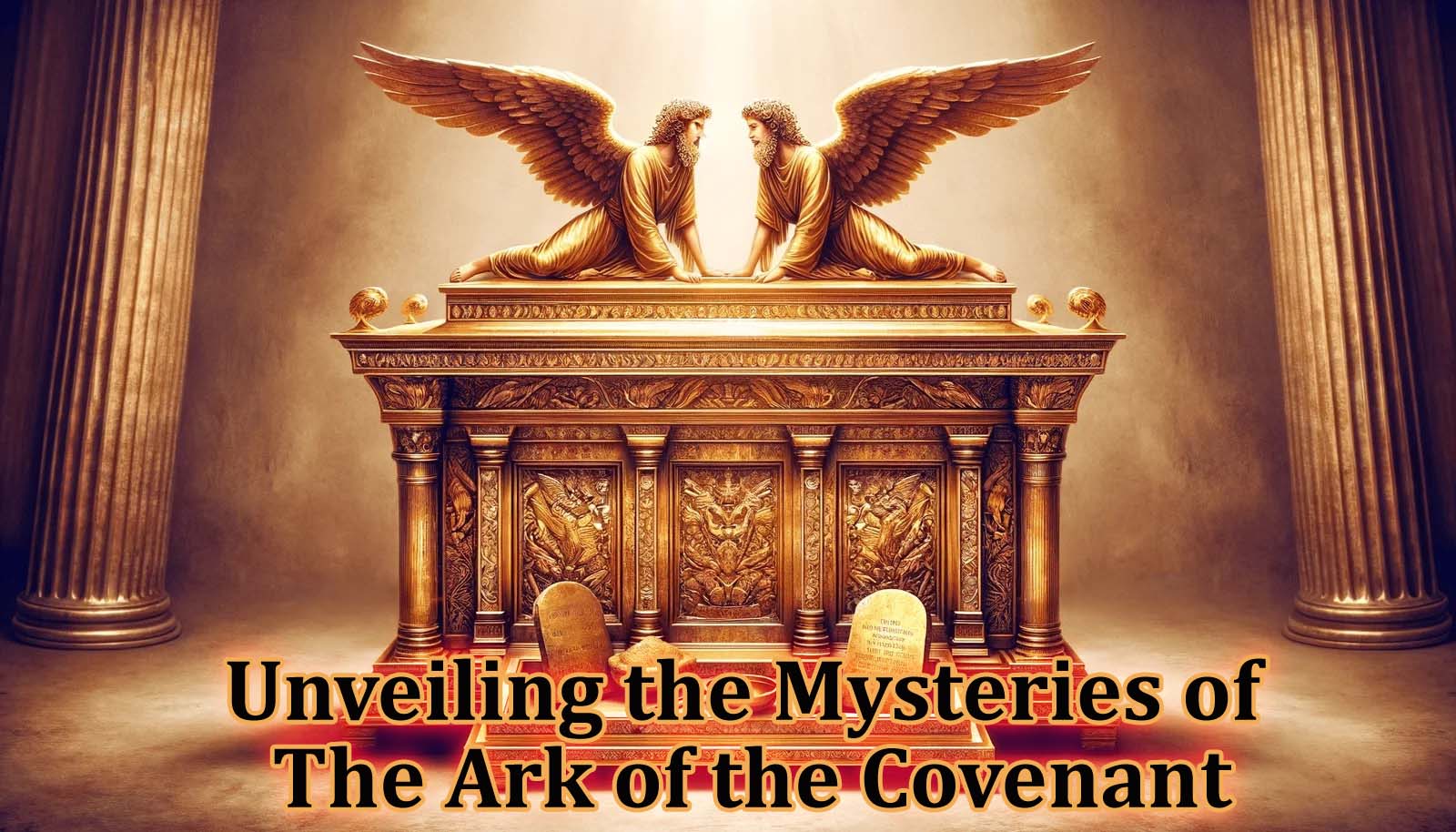Unveiling the Mysteries of the Ark of the Covenant: A Journey Through History and Myth

Mystery News
World
The Ark of the Covenant, an object of
profound mystery and intrigue, has captured the imagination of scholars,
theologians, and storytellers for millennia. Its origins rooted in the pages of
ancient texts, its fate shrouded in uncertainty, the Ark stands as a symbol of
divine presence and human longing, a relic that transcends time and space. In
this comprehensive exploration, we embark on a journey through the annals of
history and myth, seeking to unravel the enigma of the Ark and understand its
significance in the tapestry of human experience.
Chapter
1: The Identity of the Ark
At the heart of the Ark of the Covenant
lies its identity as a sacred vessel designed to house the divine presence of
the Lord. Described in meticulous detail in the pages of the Hebrew Bible, the
Ark was constructed according to God's instructions, its design imbued with
symbolic significance. Made from acacia wood, renowned for its durability, and
overlaid with pure gold, the Ark embodied the craftsmanship of its creator and
the majesty of the divine. Adorned with golden cherubim and crowned with a
mercy seat, it served as a tangible manifestation of God's power and holiness, a
symbol of His covenant with His chosen people.
Chapter
2: The Construction of the Ark
The construction of the Ark, as outlined in
Exodus 25:10-22, was a testament to the Israelites' devotion to their God.
Crafted from the finest materials and adorned with sacred artifacts, the Ark
symbolized the covenant between God and His people. The inclusion of the
tablets inscribed with the Ten Commandments, Aaron's staff, and a jar of manna
imbued it with layers of spiritual meaning, representing the law, the
priesthood, and divine provision. The Ark was not merely a physical object but
a conduit for divine communication, a vessel through which God revealed His
will to His people.
Chapter
3: Journey Through History
Throughout Israel's history, the Ark of the
Covenant played a central role in the nation's religious life. It accompanied
the Israelites on their journey through the wilderness, serving as a symbol of
God's presence among them. It found a resting place in the Tabernacle during
their wanderings and later in the Temple built by King Solomon. However, its
fate took a tumultuous turn when it fell into the hands of the Philistines,
leading to a series of calamities that befell those who possessed it. From plagues
to divine retribution, the Ark's power was both awe-inspiring and perilous, a
testament to the sacredness of its purpose and the consequences of
disobedience.
Chapter
4: The Spiritual Significance of the Ark
Beyond its physical attributes, the Ark of
the Covenant embodied the spiritual presence of God among His people. As the
mercy seat where God's glory dwelled, it served as a focal point for worship
and atonement. The High Priest entered the Most Holy Place once a year to make
sacrifices on behalf of the nation, seeking forgiveness for their sins and
reconciliation with their God. The Ark was a symbol of divine grace and
redemption, a tangible reminder of God's covenantal faithfulness and His
promise to dwell among His people forever.
Chapter
5: Legends and Lore
Despite its biblical origins, the Ark of
the Covenant has become a subject of myth and speculation. From Hollywood
blockbusters to historical texts, the Ark's legend has transcended its
religious roots, capturing the imagination of believers and skeptics alike.
Stories of its disappearance, from the Babylonian conquest to its rumored
relocation to Ethiopia or beyond, continue to fuel speculation and intrigue.
Some believe that the Ark possesses mystical powers, capable of bringing
blessings or curses upon those who come into contact with it. Others view it as
a historical artifact, a relic of antiquity with no special significance beyond
its archaeological value. Whatever the truth may be, the Ark remains a symbol
of mystery and wonder, inviting us to explore the depths of human belief and
the enduring power of myth.
Chapter
6: Reflections on Faith and Mystery
As we contemplate the mysteries of the Ark
of the Covenant, we are reminded of the enduring power of faith and the human
quest for meaning. Whether viewed as a relic of antiquity or a symbol of divine
presence, the Ark continues to evoke wonder and reverence, inviting us to
explore the intersection of history, myth, and spirituality. In a world filled
with uncertainty, the Ark stands as a timeless reminder of the enduring search
for transcendence and the mysteries that lie beyond human understanding. As we delve
into its history and legends, we are invited to ponder the deeper mysteries of
existence and the timeless quest for meaning that unites us all.
Editor’s
Thoughts:
In conclusion, the Ark of the Covenant
remains a symbol of mystery and wonder, a relic that transcends time and space.
From its origins in the pages of ancient texts to its enigmatic disappearance,
the Ark has captured the imagination of scholars, theologians, and storytellers
for millennia. Whether viewed as a sacred vessel housing the divine presence or
a historical artifact with no special significance, the Ark continues to
inspire awe and reverence, inviting us to explore the depths of human belief and
the enduring quest for meaning. In the end, the true significance of the Ark
may lie not in its physical form or its mystical powers but in the questions it
raises and the mysteries it embodies, reminding us of the boundless
possibilities of faith and the enduring power of myth.


